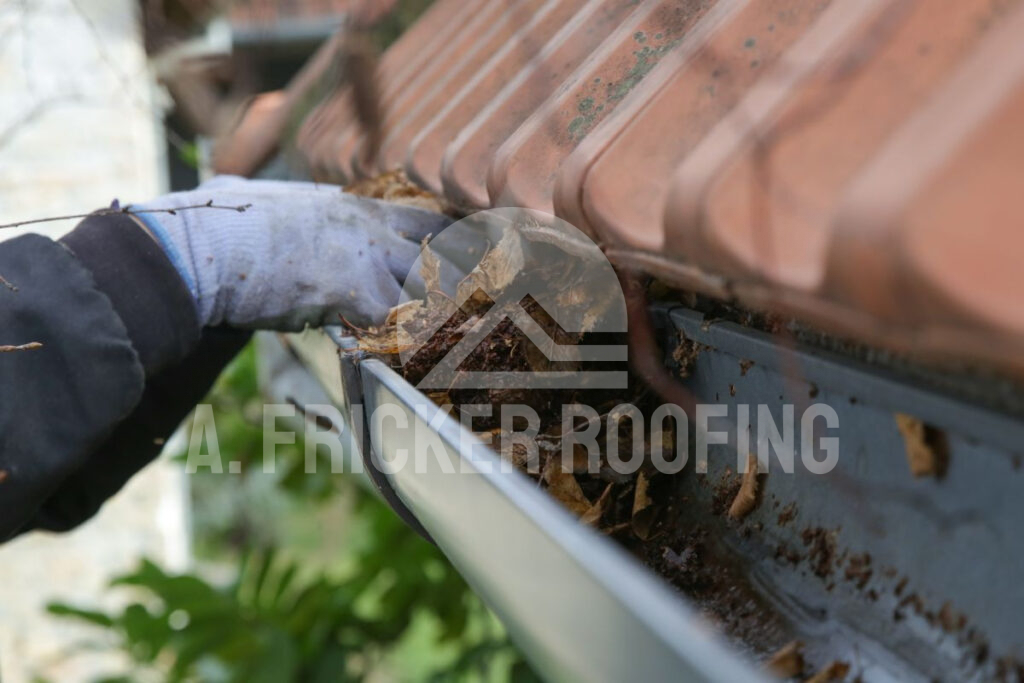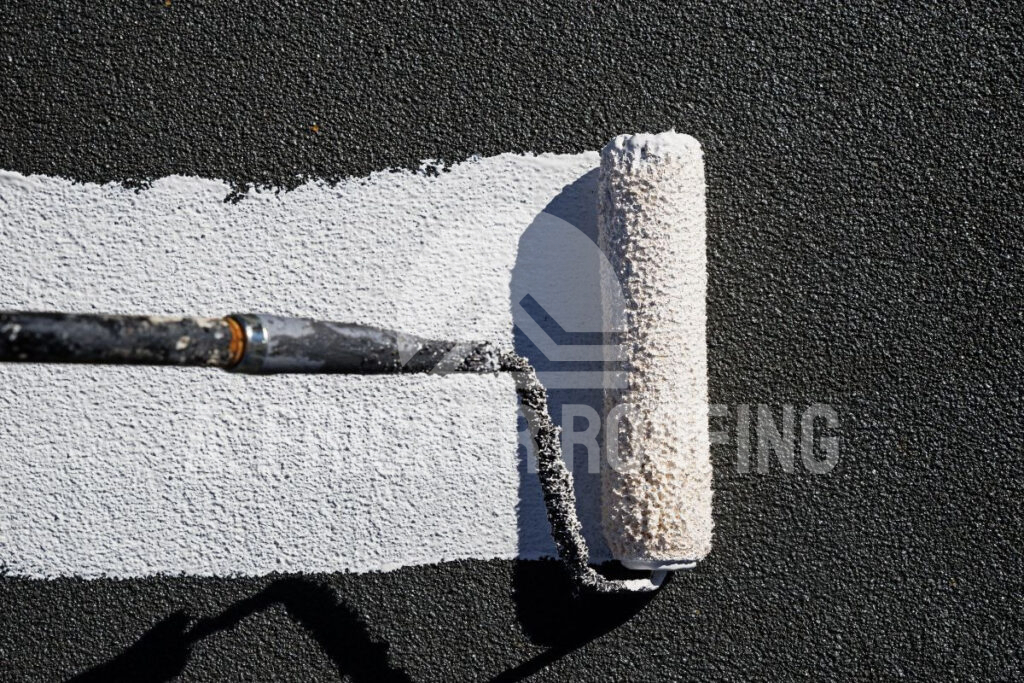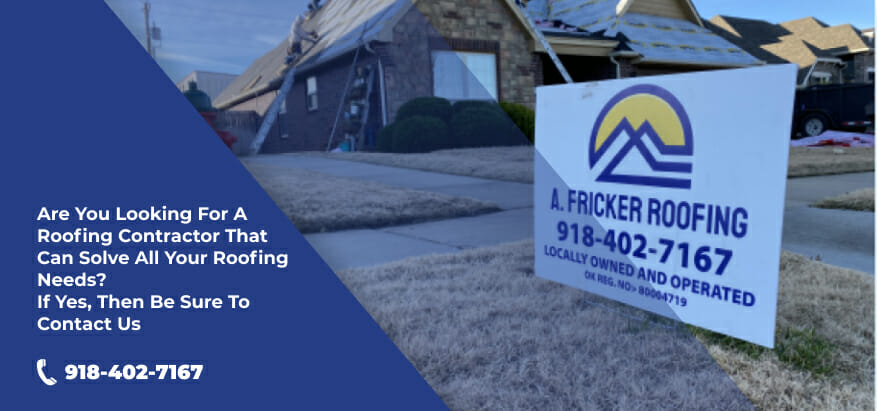Commercial roof maintenance is not just about keeping your roof intact, it’s about ensuring the longevity and safety of your entire building. It’s something that doesn’t have to take much of your time and yet, it can prevent expensive repairs and extend the life of your roof. In this blog post, we’ll provide you with tips, along with a commercial roof maintenance checklist to help you plan your own maintenance routine.
What Is Commercial Roof Maintenance?
When we talk about commercial roofing maintenance, we’re referring to a systematic approach to caring for your roof. This involves regular inspections, cleaning, and minor repairs in order to address issues before they escalate. Commercial roofs are mostly flat and due to this, become more vulnerable to Oklahoma’s harsh weather where heavy rains and storms are common. All this can lead to wear and tear over time, so having a well-maintained roof not only protects your investment, but also contributes to the overall safety and comfort of those working within the building.
Types of Commercial Roof Maintenance

Commercial roof maintenance involves several tasks, and doing them on a regular basis can help improve the durability and the lifespan of your roof.
1. Routine Inspections
Routine inspections are the backbone of any commercial roof maintenance plan. These inspections should be conducted at least twice a year, preferably in the spring and fall. Routine inspection of your commercial flat roof will help you catch any issues early before they become major problems.
2. Preventative Maintenance
Preventative maintenance is all about addressing potential issues before they escalate into significant roofing problems. This proactive approach can save you a lot of money and hassle in the long run. Preventive maintenance includes sealing and waterproofing, gutter and drain maintenance, and roof membrane inspection.
3. Corrective Maintenance
Corrective maintenance addresses issues that have already been identified during inspections or as part of routine commercial maintenance. This type of maintenance is essential for keeping your roof in optimal condition, and includes, but is not limited to, repairing leaks and replacing damaged materials.
A Practical Commercial Roof Maintenance Checklist
If you’re trying to keep up with the maintenance of your commercial roof, here are some things to keep in mind in order to be successful:
1. Get Regular Inspections
Schedule bi-annual inspections with a qualified roofing contractor to detect early signs of damage or deterioration. But remember, these inspections should be thorough, covering everything from the roofing membrane to signs of water damage and the condition of flashing and seals. Additionally, consider after-storm inspections, as severe weather can cause immediate and sometimes hidden damage that needs immediate attention.
2. Clean Gutters and Drains

Many issues with pooling water arise because of poor drainage or clogged gutters, so cleaning is a must. By cleaning the gutters you’re preventing blockages and ensuring that water can flow freely away from the roof, protecting the underlying structure. Along with this, if you live in an area surrounded by trees, or with frequent storms, you may have to clean the gutters and drains more frequently to maintain proper drainage.
3. Seal and Waterproof
Without being sealed or effectively waterproofed, commercial roofs are more prone to leaks. From the unsealed holes and cracks, water can seep into the roofing system, further compromising its structural integrity.
Check for gaps, cracks, or punctures in the roofing membrane and promptly seal them to prevent water from entering the building. Waterproofing measures are crucial, especially in areas prone to heavy rain or snow. You can also apply sealant regularly wherever you find cracks in order to extend the life of your roof and prevent structural deterioration. Keep in mind that waterproofing is not a one-time task, it requires periodic reapplication to ensure continued protection.
4. Check Roofing Materials
Checking roofing materials for signs of wear is vital in order to maintain the overall health of your roof. As you know the roofing materials that are used on commercial roofs are different from pitched roofs and are mostly available in the form of membranes.
Inspect roofing membranes like TPO and EPDM for punctures, deteriorated flashing, damaged membranes and more. Addressing these issues promptly can prevent further damage and extend the lifespan of your roof. Different roofing materials have varying lifespans and maintenance needs, so understanding the specific roofing material installed on your roof and its care requirements is essential. For example, metal roofs might require rust treatment, while EPDM roofs may need sealing.
5. Install Roof Coatings

Roof coatings have changed the game for commercial flat roofing systems. For those not aware, roof coatings act as an additional layer of protection for your roofing membrane, and there are three major types, including silicone, acrylic and polyurethane, each of them having their own set of benefits and limitations.
To know more about which coatings should be used on your roof, read our guide on: 7 Most Popular Commercial Roof Coatings & Their Benefits
6. Limit Foot Traffic
When it comes to commercial roof maintenance plans, one important thing you need to do is to limit the amount of daily foot traffic on your commercial roof. Though the roofing membranes are durable, they can falter with regular foot traffic. Start by establishing a clear policy on who can access the roof and under what circumstances.
You can also train all personnel who might need roof access on proper protocols, including walking paths to minimize damage to the roofing material.
7. Trim Surrounding Trees
It’s crucial to manage the landscaping around your commercial property, especially overhanging tree branches. While it may not seem like a big problem at first, these branches can scrape and damage roofing materials during high winds or storms, while fallen leaves can clog drainage systems. Regularly trim trees near the building, ensuring branches are at least 10 feet away from the roof’s edge.
8. Check For Energy Efficiency
Regular energy efficiency checks can significantly impact both your roof’s performance and your building’s overall energy consumption. Start with a comprehensive roof energy audit, ideally conducted by a professional. This should include thermal imaging to detect heat loss and assess insulation effectiveness. They should also check for air leaks around rooftop penetrations such as roof vents, skylights, and HVAC units, as these can significantly impact energy efficiency.
Important Note: Document All Maintenance
Keep detailed records of all inspections, repairs, and maintenance activities. This documentation can be crucial for warranty purposes and helps in planning future maintenance needs.
Let Us Handle Your Commercial Roof Maintenance For You!
When it comes to maintenance, you need to be attentive and proactive, and regular maintenance is the key to doing that. We know handling a business is tough enough as it is and you might not have much time to do these tasks, so luckily, we’re here to help you!
A. Fricker Roofing & Waterproofing is a premier commercial roofing company serving Broken Arrow and surrounding areas of Oklahoma. Whether you need to replace your commercial roof or want someone to handle the maintenance of your roof, we do it all. Contact us today at (918) 402-7167 to book a free roof inspection with our team.

